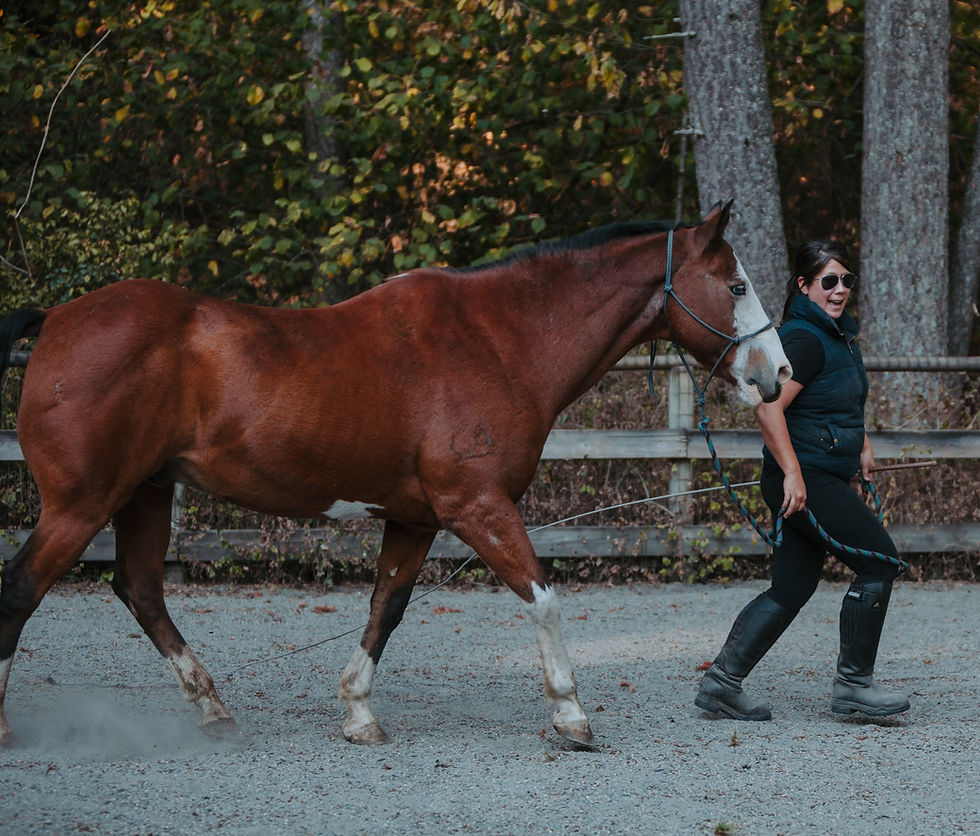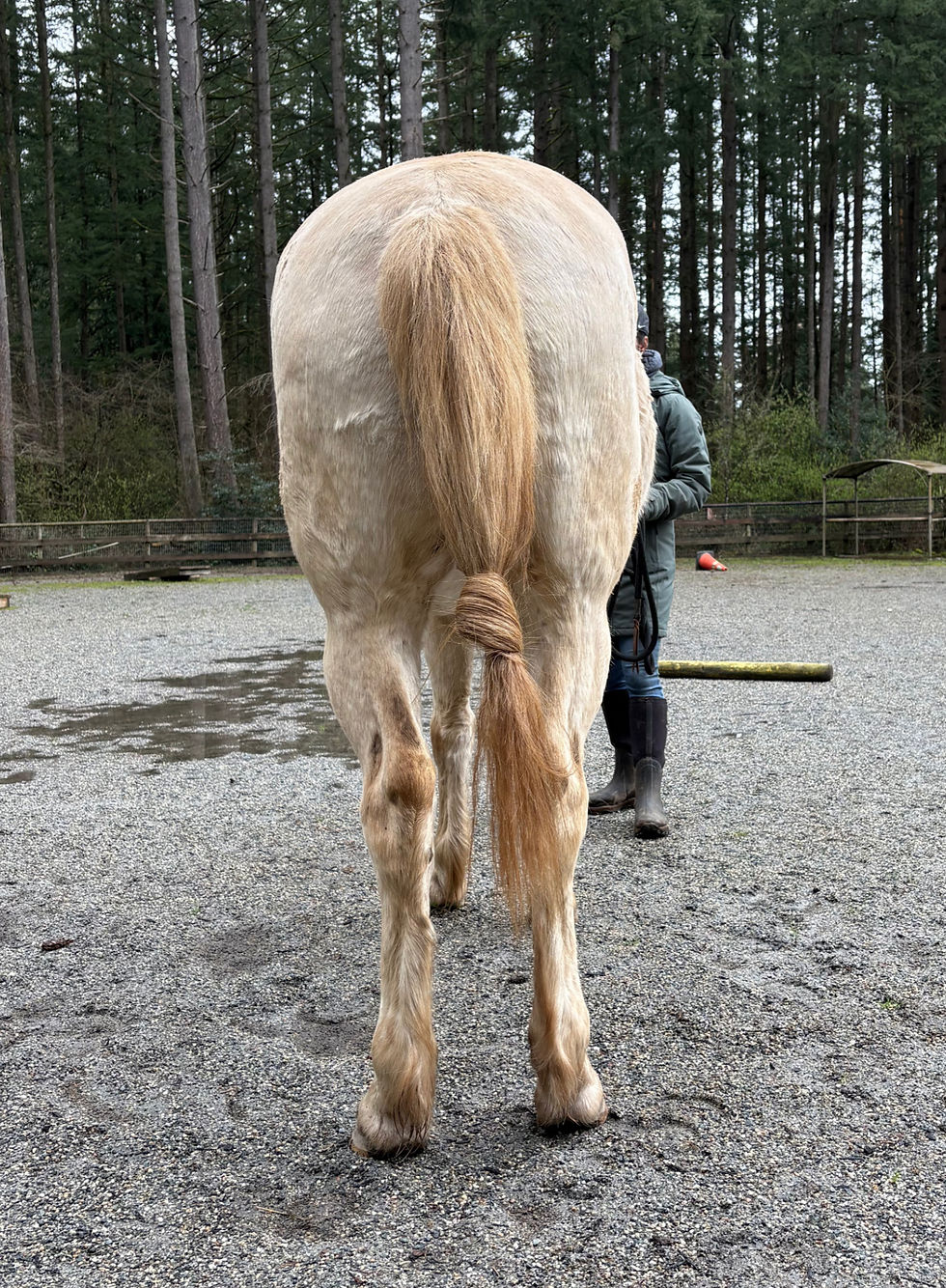Equine Motor Control: The Impact of Injuries, Pain, and Imbalance on Movement
- Elisse Miki

- Feb 25, 2019
- 5 min read
Updated: May 8
It has become glaringly obvious to me that horses suffer many of the same, if not more, dysfunctional movement patterns, than us humans. The majority of these motor control problems tend to be reflective of human imposed demands and greatly predisposes the horse to a myriad of orthopaedic issues. With the addition of equipment and a lack of species specific living environments, the equine body is required to withstand substantial external forces through no fault of their own inherent biomechanics or physiology.

The main area of concern seen regularly in practice is altered motor control due to injury or imposed imbalance.
This interruption in equilibrium can be caused by a multitude of factors, such as ill-fitting tack, poor hoof balance, disrupted dietary needs, lack of exercise, and the rider’s own physical limitation, to name a few.
When an injury occurs, the horse must develop an altered motor pattern in order to continue to move through daily demands.
Conversely, poor motor control, such as underconditioned core muscles, can cause a weak topline, leading to an injury which may not have occurred in the first place had the muscular system undergone adequate preparation. It’s a bit of a chicken-egg type of question but either route leads to the same ending; dysfunction and altered motor control.
In order to determine whether an injury lead to an altered motor control or the reverse, a qualfied assessment is required, keeping in mind each presentation is highly case specific.
Motor control refers to “the process by which the nervous system coordinates the muscle and limbs to achieve a desired movement or set of actions; this includes the ability to anticipate, adjust and respond to deviations from the desired action” (Ledermen, 2010). Since the motor system functions as a whole unit neurologically, it is distinctly neglectful to simply try to assess or rehabilitate individual segments without taking into account the function of the entire system as a whole (Cook, 2015).
Movements are the result of complex multi-muscle patterning as opposed to an individual muscle contracting. Much like when you go to perform a squat, it is not solely the glutes and quadriceps that are active but the entire chain of muscles from lower back to soles of feet, plus many deep core stabilizers. This is why we must look at the horse’s body as a complex system of regional interdependence which means that dysfunctions in one remote area may contribute to dysfunction at a different site. How this translates to work as an equine therapist is that an owner’s report of “what the problem is” versus the true site of primary concern could be very different.
When trying to understand regional interdependence, one of the simplest ways to look at it is as the relationship between mobile and stable segments. Joints that have one primary movement plane such as a hinge joint in the knee are considered “stable” while others that don’t have a single plane of movement, such as the ball and socket hip, are considered “mobile” (Cook, 2016). The equine body (just like us humans) works in an alternating pattern of stable segments next to or on top of mobile segments. For example, the hoof is mobile, while the pastern is stable, then the fetlock is mobile, while the parts of the carpus are stable and so on. The reason for this design is to give stability to heavily weighted areas while still providing ease of movement and mobility of the entire limb for complex motor patterns. It is because of this physiological design that humans and horses are able to run, cut, twist, and bolt at high speeds without sustaining an injury each and every time. Dysfunction arises when previously mobile segments become stable or vice versa due to injury or imposed imbalance (Cook, 2016). For example, a hoof injury will require the pastern, fetlock, carpus, elbow, and shoulder to adaptively modify phsyiology which results in altered motor control.
A horse’s issues with motor control can become hugely compounded by pain. Pain is a tricky variable in that it can alter motor control in a very unpredictable way and may also cause behaviours in the horse which would otherwise not present. Pain can either inhibit a movement altogether (the brain tells the muscles not to do the movement) or do the exact opposite (the brain tells the surrounding muscles to activate) as part of a protective muscle spasm/guarding response (Hasenbring et.al, 2019).
In a human study on biomechanical changes due to injury, data indicates that there were significant delays in motor activation and recruitment of gluteus maximus in ankle sprain patients even one year post recovery and rehabiliation (Cook, 2016). Even once pain free these patients still demonstrated altered and weak motor patterning with regard to hip muscle activation (Cook, 2016). This study demonstrates how the lack of gluteal activation while these individuals were on crutches or limping led to a permanent inhibition of gluteal motor activation and control.
Studies such as this have caused me to consider these factors in our equine patients. The very same can be seen in horses who have suffered severe hindlimb trauma, demonstrating reduced gluteal muscle mass and difficulty engaging the hind end. Each situation is dependent on many factors and every horse will respond to pain differently based on their history, genetics, and training.
Either way, it is clear that pain can also cause altered motor control and thus should be addressed first and foremost. In order to progress to more focused treatments, pain must be decreased and ideally eliminated before able to truly target the cause of dysfunction and develop a well-rounded treatment plan. The challenge with altered motor control is that it can be difficult to assess and retrain a new recruitment pattern once the neurological system has adapted to this “old” way of moving. It takes repeated activation and conditioning of a new motor pathway (thousands of repetitions of a given movement pattern) to retrain the nervous system.
My practice focuses around developing assessment strategies designed to break down movement patterns and determine the source of dysfunction over chasing pain. The horse’s body serves as our guide to where altered motor control presents. Muscle tension, tenderness, asymmetries, and imbalance are all palpable at relatively superficial tissue levels and visible to the trained eye during static observation as well as dynamic gait assessment.

Over the course of my studies and practice, I have come to understand that horses are systematically authentic with where the source of discomfort lies. It is the awareness and interpretation of these signals which is the true art of receiving the necessary feedback needed to treat effectively. There is repeated awe how willfully a horse will communicate body discomfort to us, which in turn, allows for endless possibilities, if all therapists and horse owners could hone these “listening” skills.
It is my life's mission to develop continuing education programs that assists professionals and horse owners in identifying altered motor control with the goal of reducing dysfunction and alleviating pain in the equine patient.
Ready to learn more? Explore our Free Resources for tools you can use right away, dive into our Online Courses to deepen your knowledge, or join one of our Certification Programs to take your equine therapy practice to the next level.
References
Cook, G., Burton, L., Kiesel, K., Bryant, M., & Torine, J. (2015). Movement: functional movement systems: screening, assessment, and corrective strategies. Aptos, CA: On Target Publications.
Hasenbring, M. I., Andrews, N. E., & Ebenbichler, G. (2019). Overactivity in chronic pain, the role of pain-related endurance and neuromuscular activity. The Clinical Journal of Pain, 36(3), 162–171. https://doi.org/10.1097/ajp.0000000000000785
Lederman, E. (2010). Neuromuscular rehabilitation in manual and physical therapies principles to practice. Churchill Livingstone/Elsevier.






Comments